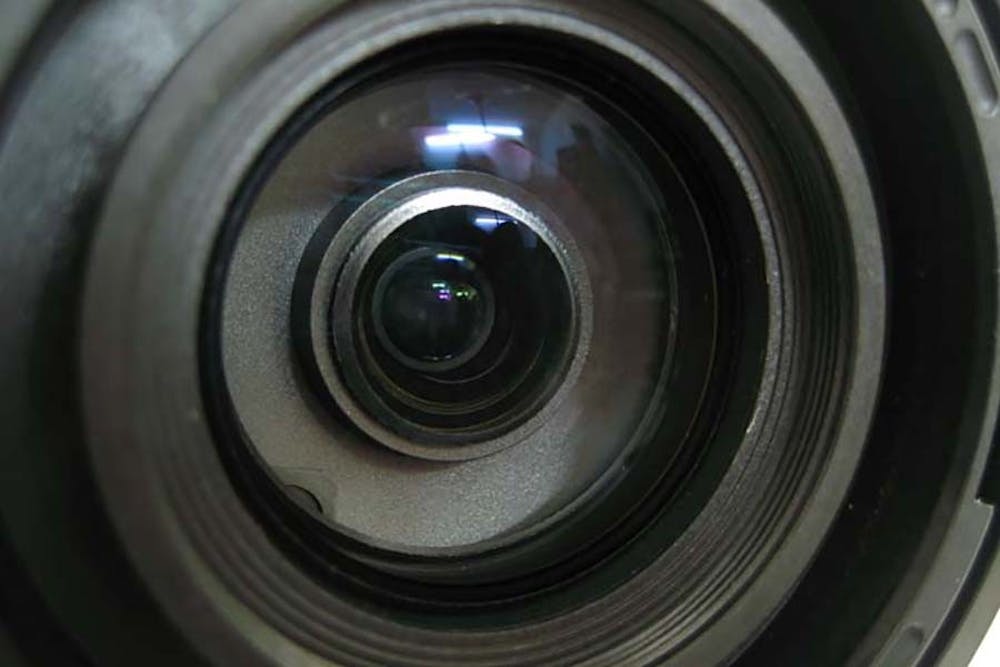By Jack Ryan, For The Miami Student
Decent horror films make you jump and scream in the theater. Good horror films scare you while you watch them and then follow you home, effectively rooting themselves in your subconscious, creating paranoia and fear in the most innocent of circumstances. Great horror films both scare and haunt you, but also make you think about the nature of this fear, why it exists, what it really means. Simply put, "It Follows," the sophomore release from writer/director David Robert Mitchell, is a great horror film.
The premise of "It Follows" is simple. Average college girl Jay (Maika Monroe) goes on a date with Hugh (Jake Weary), a recent acquaintance. They consummate their young relationship in an abandoned parking lot. Afterwards, as she lies across the backseat, reminiscing about youthful imaginations of romance, she is suddenly incapacitated by a rag of chloroform to the face. Not by a masked killer or a mysterious hooded figure, but by Hugh.
Jay awakens bound to a wheelchair in an abandoned building, seemingly unharmed. Hugh is there, and he begins to explain himself. He was the recipient of a curse, where he was stalked by a shape shifting entity, only visible to him. It could be anyone, dead or alive, but it doesn't run, scream or use complex otherworldly powers to hunt; it just walks. Slowly, but constantly.
He has transmitted this curse to Jay sexually, and she is now the sole target, until she either dies or "passes it on" as well. He is telling her because if she dies, it will come back for him.
After giving her a first glimpse of 'it', he takes her back to her home and abandons her.
Naturally, Jay panics. She recruits her four close friends to help her out: Paul (Keir Gilchrist), a compassionate former flame; Yara (Olivia Luccardi), a girl who constantly reads Dostoevsky off her seashell shaped Kindle (no, really); Greg (Daniel Zovatto), who bears a resemblance to Judd Nelson's character in "The Breakfast Club"; and Kelly (Lili Sepe), another acquaintance who just seems to exist as a filled car seat. None of them can see this monster, but they support their friend regardless.
Together, they try to find a way around this curse. The obvious answer is sex, yet she seems too empathetic to put someone else in her shoes. The morally appealing, but more difficult route is living her life on the run. As Jay struggles with these options, she and her friends move back and forth across Detroit to create distance between herself and 'it', and things begin to get understandably tense.
"It Follows" is guided very intelligently by Mitchell, who clearly has looked over recent jump-scare rich flicks. He frequently crescendos tension to nothing, taking control of his audience with a strong level of restraint before surprising them off-hand, usually with the creature's gruesome forms. Mitchell also frequently uses wide shots that slowly zoom in, simultaneously creating eerily beautiful images and daring us to frantically search for something that (usually) isn't there. The score, crafted by Disasterpeace, is synth-filled creepiness (think 16-bit Zelda mixed with "The Shining") that looms and strikes, cementing an uncomfortable and claustrophobic tone.
Regardless of a few minor flaws, "It Follows" is truly a great horror film because of the unorthodox way it invests fear in a viewer. Here, terror isn't derived from the disturbing manner in which the characters die, à la "Saw," because death isn't an immediate given; Jay can easily avoid the creature by moving. The amorphous nature of 'it' makes fearing a symbol, like in "Halloween," impossible. Mitchell strips specificity from it's monster's nature, moving the source of the characters' (and our) dread to something innate.
"It Follows" puts you on the edge of your seat while you're in the theater, makes you watch your back on the way to the car, and forces you think to about it late into the night, equally from fright and intrigue. David Robert Mitchell has successfully melded genuine fear and the anxieties of youth, making the first horror movie in a very long time to admit that the scariest part of death isn't in the brutal ways in which it can occur, but the gut-wrenching reality of mortality itself.

